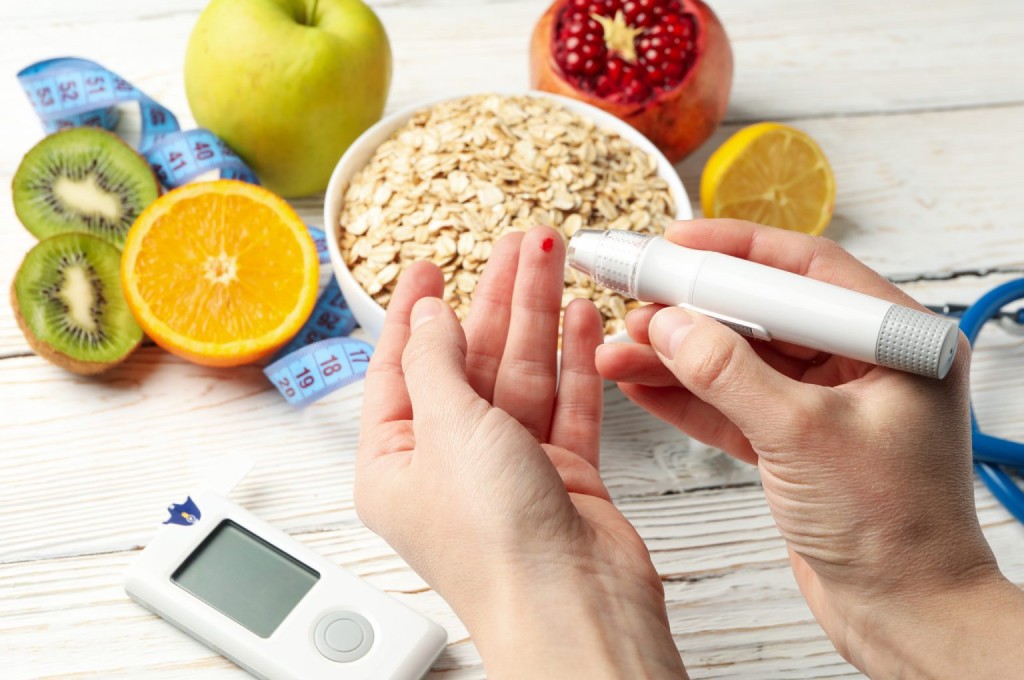
The concentration of triglycerides (TG) is one of the indicators of the body’s lipid metabolism. Together with other parameters, such as total cholesterol (TC) and its low- and high-density lipoprotein fractions (LDL-C – low-density lipoprotein cholesterol and HDL-C – high-density lipoprotein cholesterol, respectively), as well as non-HDL (a calculated indicator, these are all cholesterol fractions except HDL), it is a routine determination in clinical dyslipidaemia tests. The norm for plasma TG levels is <150 mg/dl (1.7 mmol/l) fasting and <175 mg/dl (2 mmol/l) after eating. Exceeding this value is called hypertriglyceridaemia, which can lead to acute pancreatitis, but is also a risk factor for atherosclerosis and cardiovascular disease in general.
TGs on the chemical side are fats, or esters of glycerol and fatty acids. In the body, they act as an energy component that is consumed for current energy expenditure or stored as adipose tissue. They can be produced in the liver from fatty acids and carbohydrates or supplied with food. It should be remembered that the presence of TGs is necessary for the proper functioning of the body and only an excess of TGs is harmful.
The positions of numerous scientific societies, including the European Society for Atherosclerosis Research and the European Society of Cardiology, make it clear – lifestyle changes and appropriately selected dietary strategies are integral to the prevention and treatment of dyslipidaemia. While lifestyle change mainly refers to smoking cessation and the introduction of physical activity, changes in daily diet deserve more discussion. It is also important to remember that in people with hypertriglyceridaemia, the dietary modifications introduced should be permanent and not just a temporary intervention.
So how can we lower triglyceride levels with diet? There are several ways, and it is worth using all methods:
Weight reduction
Here the recommendations are clear – the majority of people with an above normal TG are overweight and obese. Very often, hypertriglyceridaemia is associated with insulin resistance of our body tissues. Successful weight reduction allows an increase in tissue sensitivity to insulin and therefore a reduction in plasma TG levels. The most important recommendations in this case are: the introduction of a well-balanced reduction diet, renunciation of highly processed foods, high-energy snacks and fast-foods, but also an adequate fluid supply (approximately 30 ml/kg body weight) and, if possible, the introduction of physical activity. The most commonly recommended dietary models here are the Mediterranean diet and plant-based diets.
Choosing the right carbohydrate sources
Scientific studies confirm the association of high TG concentrations and a high TG/HDL-C ratio with the occurrence of insulin resistance. Therefore, people with hypertriglyceridaemia should pay more attention to the quality of their carbohydrate intake. Low-glycaemic-index and low-glycaemic-load products are recommended (e.g. whole-grain cereals, green vegetables and berries). On the other hand, products containing high amounts of simple sugars (sweets, snacks), including fructose (honey, fruit juices), are undesirable. In addition, products rich in fibre should be chosen, i.e. buckwheat, barley groats, whole-grain bread, vegetables and fruit.
Selection of appropriate fat sources
Limiting saturated fatty acids in favour of monounsaturated and polyunsaturated ones is the cornerstone of hypertriglyceridaemia diet therapy. Fatty meats, full-fat dairy products and oils of tropical origin (e.g. coconut, palm), which are rich sources of saturated fatty acids, should be abandoned. On the other hand, unsaturated fatty acids, including omega-3 EFAs, are recommended. Their sources include marine fish (e.g. salmon, trout, halibut, sprat, mackerel, tuna), algae, but also plant products (e.g. flaxseed, walnuts, chia, wheat germ and oils derived from them). As studies have shown, the consumption of omega-3 fatty acids can result in a reduction in plasma TG concentrations by up to nearly half over time!
Giving up alcohol
Despite the few reports claiming a beneficial effect of consuming SOME red wine on the lipid profile, current guidelines recommend total abstinence. Alcohol for those with above normal TG increases the risk of acute pancreatitis, but also contributes to excessive liver steatosis and impaired fat digestion.
Appropriate changes in dietary habits can make a significant contribution to lowering plasma TG concentrations. With the simultaneous introduction of physical activity and renunciation of stimulants, such changes often lead to a normalisation of TG concentrations. It is worth remembering, however, that abnormalities in the lipidogram should always be consulted with a doctor.
Author: Zuzanna Cybulska, MSc, clinical dietitian